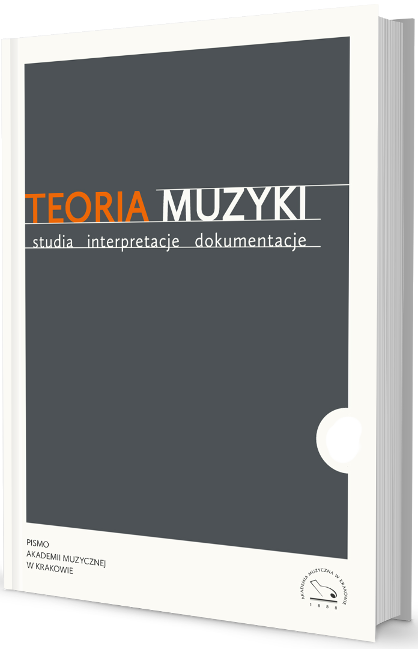Przesłania muzyki
upublicznione i prywatne
Public and Private Messages in Music
Author(s): Constantin FlorosSubject(s): Music
Published by: Akademia Muzyczna w Krakowie im. Krzysztofa Pendereckiego
Summary/Abstract: 19th-century music is closely related to almost all intellectual currents of the age. Many composers created their music to serve literary, religious, social and political purposes and, together with writers, philosophers and politicians, search for new directions.The term “message” is chosen by many 20th-century composers to make their intentions clear. For example, Arnold Schönberg articulated a belief that the most distinguished masterpieces convey prophetic messages, which point to forms that develop mankind. Many works of musical art that are surrounded by a unique atmosphere eventually owe their fame not least to the humanitarian messages they proclaim. This is true for works such as Mozart’s Magic Flute, Beethoven’s Fidelio and the Ninth Symphony, through the musical dramas of Richard Wagner, symphonies by Gustav Mahler, as well as works like Wozzeck by Alban Berg and The Soldiers by Bernd Alois Zimmermann.Apart from the pieces which convey such public messages, there are those whose connotations are “private”. These include works dedicated to the composers’ friends, patrons or persons they are closely related to. In many cases such works carry a private message, which in effect is only decipherable by the addressee.Additionally, many composers write pieces with hidden schemata. They allow themselves to be inspired by personal experiences, by visions, and by literary or ideological concepts or works of fine art, and lay compositional foundations they, for some reason, do not wish to share with the public. Weber, Schumann, Smetana, Bruckner, Tchaikovsky, Mahler, Busoni, Schönberg, Webern, Janáček, Berg – all of them have written such music. It has been the most sensational finding of recent years to discover that all the mature works by Alban Berg are based on detailed hidden schemata.
Journal: Teoria Muzyki. Studia, Interpretacje, Dokumentacje
- Issue Year: III/2015
- Issue No: 6
- Page Range: 11-26
- Page Count: 16
- Language: Polish

